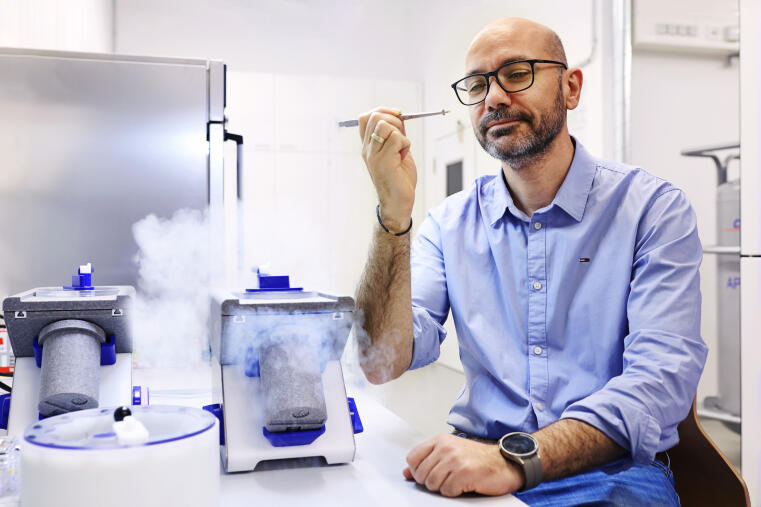On a journey to an unknown country

As Christos Gatsogiannis is packing his bags in his hometown of Karditsa, in Greece, before setting off to study in Germany – instead of Athens, like his friends – he is 18 years old. He has long wondered about whether it is the right decision – but everything falls into place very quickly: in Germany, his doubts are dispelled as soon as he has embarked on his language course at the Goethe Institute in Frankfurt.
While studying biology in Mainz, Gatsogiannis’ enthusiasm is kindled for the molecular mechanisms which take place in every cell and enable life to exist, as well as for the structures of the proteins which are decisive in their functioning. At this time, in the early years of the century, X-ray crystallography is the method of choice for analysing protein structures. However, it is by no means possible to examine every protein, and clarifying a single structure often takes years to complete. During his studies, Christos Gatsogiannis, who today has been undertaking teaching and research at the University of Münster since 2020, discovers a different technique which he can use: cryo-electron microscopy (cryoEM), in which biological samples are cooled down to extremely low temperatures. “At that time, though, there was no question of any high-resolution analysis of protein structures,” he says today.
Much has been happening for Gatsogiannis since he was a student. In 2022 his working group at the Center for Soft Nanoscience (SoN) sets up a brand-new, top-class cryo-electron microscope, and in April 2023 numerous distinguished guests take up his invitation to attend the official inauguration ceremony – the highlight to date of his professional dreams. The new equipment is capable of a resolution of around one ten-millionth of a millimetre, which corresponds to the magnitude of atomic radiuses, and it makes possible not only the structural determination of proteins and other biomolecules but also even high-resolution views directly into a cell.
But first things first: Christos Gatsogiannis makes cryo-EM – still in its infancy – the subject of his doctoral thesis, and he develops every image individually in the darkroom. In 2009 he is awarded the top grade for his thesis of summa cum laude and he decides to stay in Germany to do a post-doctorate. His next move is to the Max Planck Institute (MPI) for Molecular Physiology in Dortmund, where there is a focus on cryoEM. After completing his post-doctorate, he is made a group leader in the Structural Biochemistry Department.
While Gatsogiannis is carrying out his research in Dortmund, microscopy technology takes a quantum leap forward: cryoEM becomes capable of atomic resolution and, at the same time, a revolution takes place in the field of computer software. The three researchers who initiated and made possible the development of cryoEM receive the Nobel Prize for Chemistry in 2017.
Around the same time, the University of Münster gets a new research building, the SoN. On the ground floor of the building, below an earth-wall, is a special laboratory room with a concrete floor plate which is air-suspended on columns and is virtually vibration-free. The room was built especially to house a cryo-electron microscope.
When Christos Gatsogiannis gives up his job at the MPI in Dortmund to accept a professorship at the University of Münster, the laboratory at SoN is still empty. Under his direction, an application for large equipment is submitted, with other working groups from the fields of medicine, biology and chemistry also being involved. In 2022, there is a success to report: the German Research Foundation approves funding of 7.5 million euros for high-performance cryo-electron microscopy equipment – which is delivered and inaugurated just a few months later. Nowadays, a large number of working groups from Münster University use the microscope, which is capable of performances second to none in Germany.
Christos Gatsogiannis has now once again packed up his belongings and moved from Dortmund to the Münsterland with his wife and his daughter. He still dreams of looking inside cells. As he says, “When we look through the new microscope, we don’t know what awaits us. It’s like a journey to an unknown country.”
Christina Hoppenbrock
This article is from the brochure "Twelve months, twelve people", published in February 2024.
Download the entire brochure as a pdf file
To the other articles in the brochure "Twelve months, twelve people".
